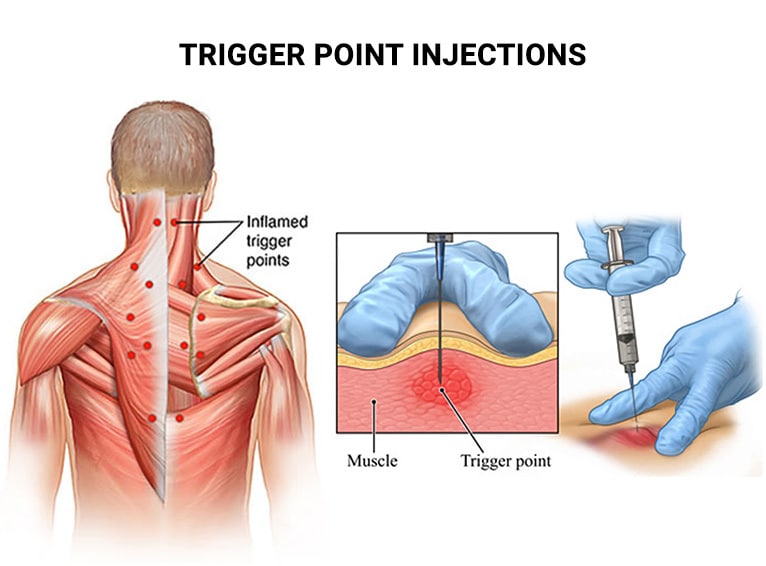A trigger point injection can alleviate myofascial pain, particularly in areas such as the neck, shoulders, arms, legs, and lower back. Trigger points are sensitive, painful muscle “knots” that may develop from acute injuries or repetitive strain, causing muscle fibers to remain contracted. These knots might be noticeable when you press on the affected muscle.
Trigger point injections often include a local anesthetic, and may also contain corticosteroids, botulinum toxin, or may be administered without any substance (dry needling).

Healthcare providers use trigger point injections to address myofascial pain, where “myo” refers to muscle and “fascial” relates to the fascia, the thin, white connective tissue enveloping each muscle. This pain typically arises from one or more trigger points, which are small, palpable bumps, nodules, or knots in the muscles.
Trigger points can occur in any muscle, but they are most frequently treated in specific muscle groups with these injections, including:
Trigger points in specific muscles can lead to particular issues. For instance, trigger points in the trapezius might cause tension headaches, while those in the piriformis muscle in the buttocks could lead to piriformis syndrome, where the muscle compresses the sciatic nerve, causing pain or numbness in the buttock and down the leg.
A trigger point injection might be the solution if your pain hasn’t responded to other treatments like over-the-counter medications, heat therapy, massage, myofascial release, or physical therapy.
Healthcare providers often combine trigger point injections with physical therapy and stretching exercises to ease the pain. This approach is especially effective when an initial trigger point injection reduces severe pain, enabling patients to engage in physical therapy or stretching exercises more effectively.
Before recommending a trigger point injection, your healthcare provider will conduct a comprehensive physical examination to exclude other potential sources of your pain, such as muscle strains, structural issues, spinal problems like degenerative arthritis, herniated discs, spinal stenosis, or radiculopathy, which involves pain from a pinched nerve.